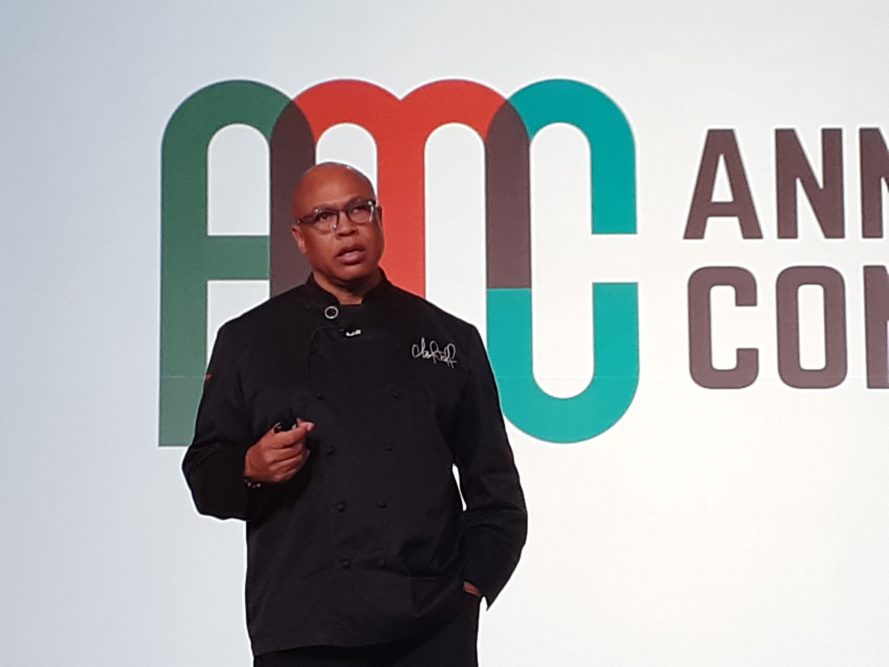NASHVILLE, TENN. — The 2024 Annual Meat Conference (AMC) kicked off with a record crowd — 400-plus — for the annual Women's Meat Industry Network luncheon, where industry leaders discussed the importance of mentorship.
The luncheon was followed by a rousing keynote address from “Chef Jeff” Henderson, who traced his arc from a tough childhood, drug dealing and prison to the executive chef position at the Bellagio Hotel & Casino and winner of Las Vegas Chef of the Year.
It was all prologue to the main event of AMC’s first day, the annual Power of Meat presentation by 210 Analytics’ Anne-Marie Roerink.
Last year was another mixed bag for the fresh meat industry, according to Roerink.
For the third year in a row, fewer pounds of meat were sold at retail.
Consumer video testimonials — a staple of the Power of Meat rollout at AMC — were dominated by shoppers complaining about the soaring costs of meats and other foods.
“Stupid expensive” was a phrase used more than once. And 32% of Americans said their finances were worse last year than in 2022.
That said, 2023 was not what Roerink would call a bad year for the meat industry — a “subdued year” was her phrase of choice.
And 2024, she said, is showing signs of an uptick.
For one thing, customers are making adjustments to cope with higher prices.
Nearly three in four Americans are making one or more changes to meat purchases to save money — with the most common strategy being to adjust the quantity of meat purchased, according to the Power of Meat.
Among meat purchasers changing quantities to save money, 30% buy smaller packages to save money immediately, and 42% buy larger bulk packs to save money over time.
On the other hand, more than nine in 10 shoppers say they would spend extra on occasion, with holidays, special celebrations and entertaining the top reasons.
In addition, retail continues to benefit from Americans turning away from even more expensive restaurant meals.
Forty-three percent of consumers are cutting back on restaurant meals, and among meat eaters who are eating out less, 75% try to mimic those meals at home.
“There’s big interest in recreating experiences consumers used to go out to dinner for,” Roerink said.
Fourteen percent of Americans, she said, try to do so frequently, and another 61% do so at least once in a while.
As understandably obsessed as most consumers are with price, it’s not price alone that motivates them, Roerink said.
She characterized the current consumer mindset as “price and,” where the “and” could be followed by taste, health, convenience or a host of other benefits.
And number one among them, as always, is taste.
“Price might be how you get your first purchase, but 92% of consumers say that if they don’t like the taste, they’re not buying it again.”

